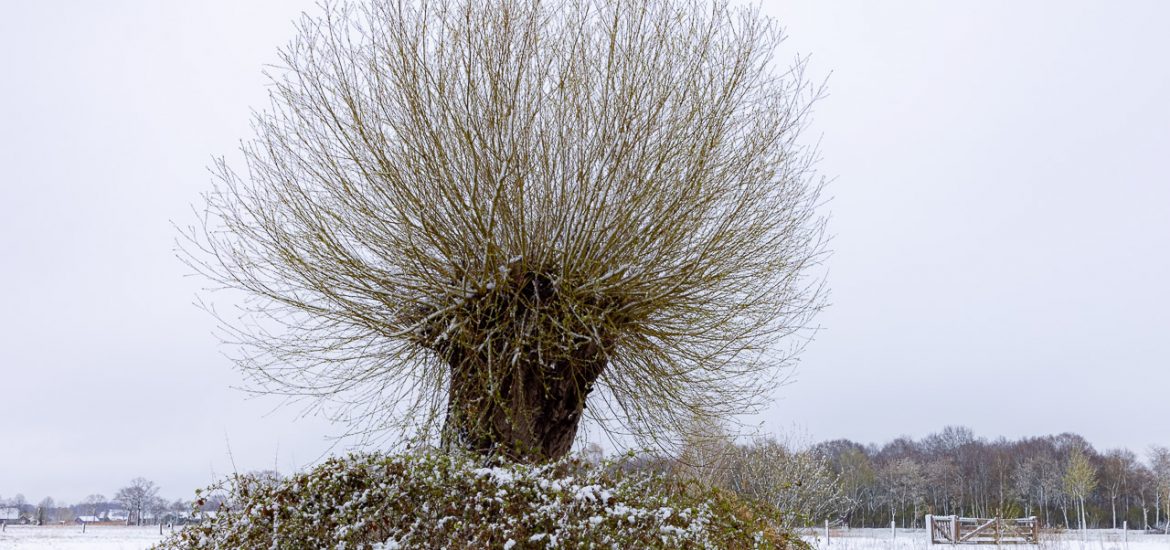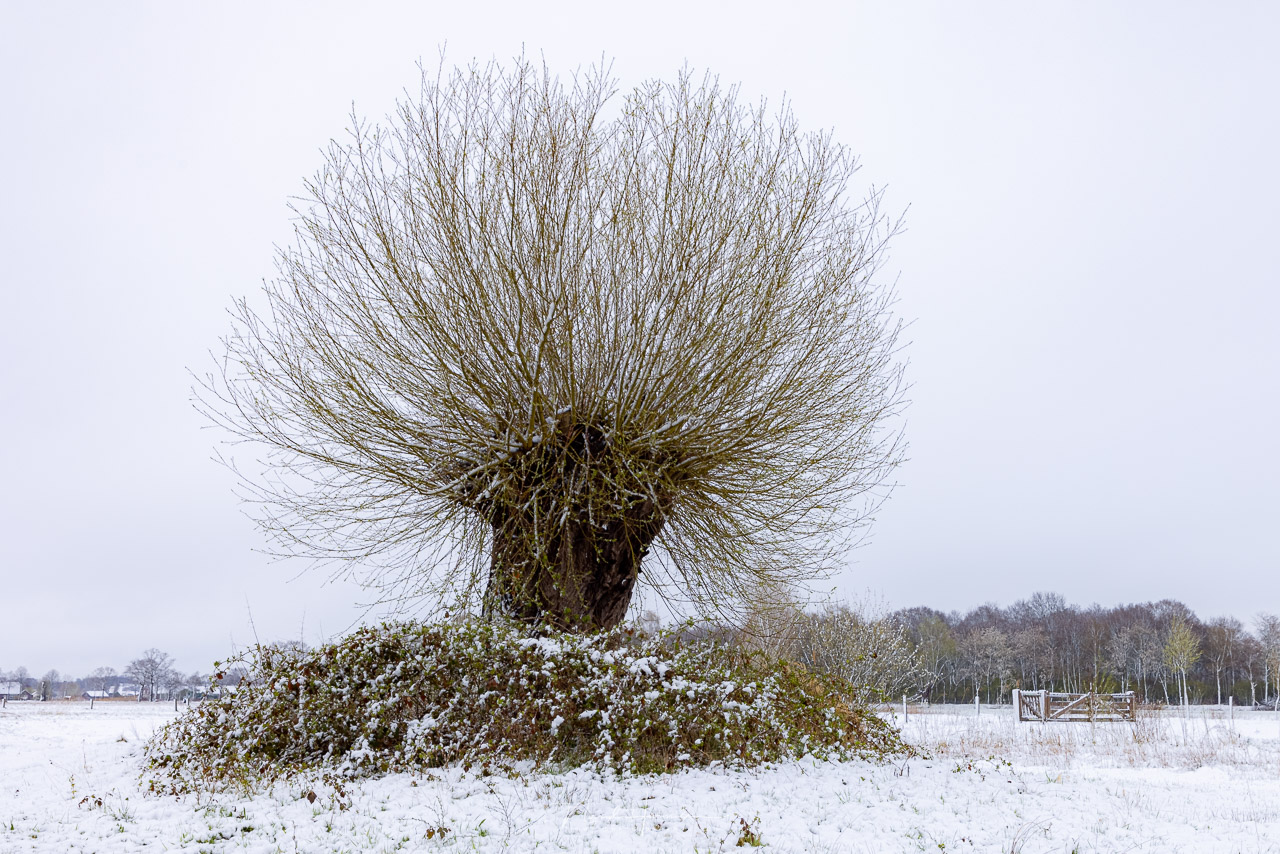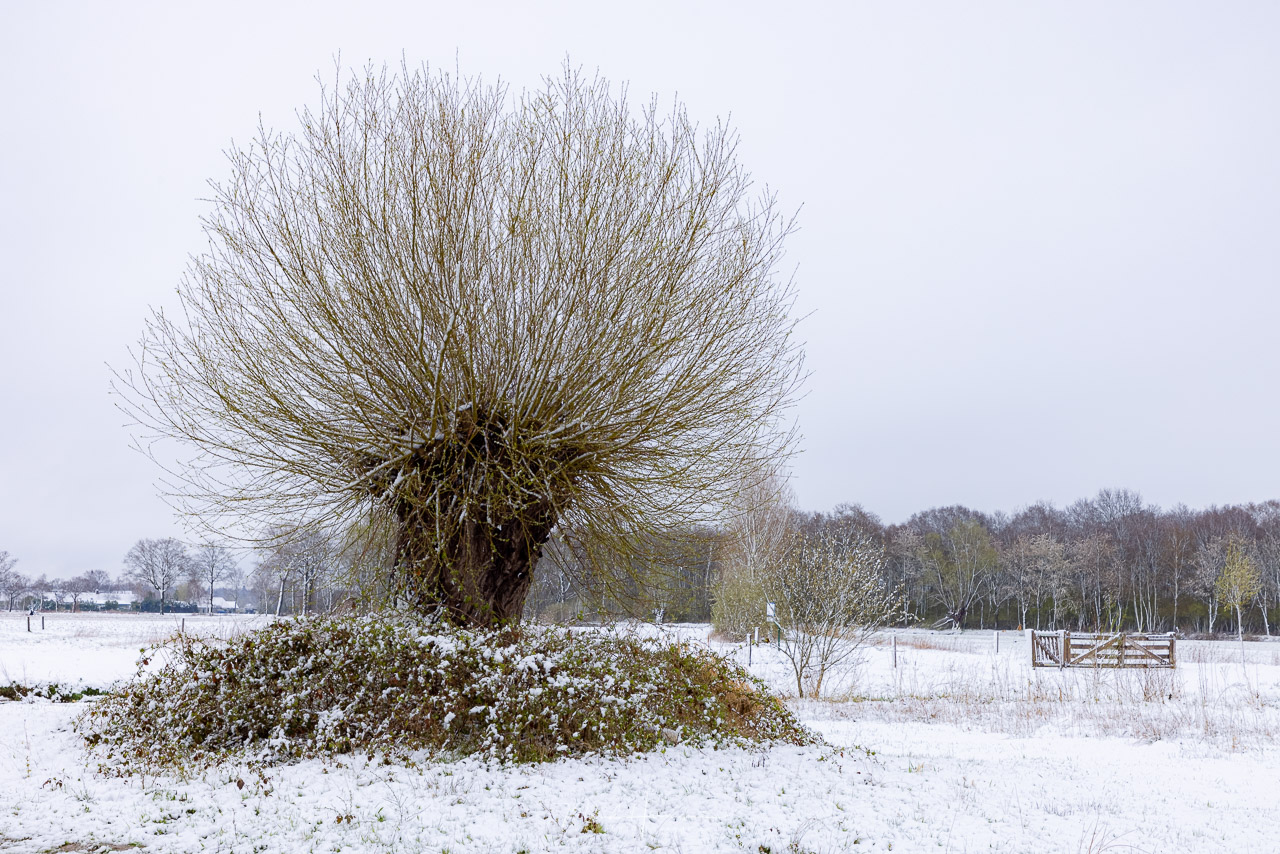Do you have a photo that you found totally amazing until you noticed something in the background that ruined everything? If you do, you’re not the only one. When shooting a subject, always keep an eye on your background.
It is always wise to have a subject in your photo. When shooting people or certain objects, that’s obvious. But it also applies to shooting landscapes, something that is often forgotten. Always make sure you have a clear subject to capture the attention of the viewer.
But don’t focus too much on that subject. You might miss details in the surroundings that can ruin your composition. Just look at the photo below. Do you notice the tree in the background, just behind the foreground tree? Once you notice that one, it will get on your nerves because it shouldn’t be there in the composition.
Because I was focusing too much on the subject, I didn’t notice the tree in the back. The result is a distracting element in the background that is getting too much attention. Once you’ve seen it, it can’t be unseen.
Pay More Attention to the Background
When you have chosen a subject for your photo, it goes without saying that you want to frame the subject in the best possible way. There are a lot of composition rules to take into account. You may want to use guiding lines and composition theory for the best plane distribution. I wrote an article about this some time ago here.
If you’re busy applying all these rules, you might forget to look at possible disturbing elements in the background. At first, these don’t seem so important. After all, it’s all about the subject. But over time, these less important background elements become more disturbing, especially if these catch your attention at some point.
When you have a subject chosen, you know what to photograph. Don’t pay too much attention to that subject anymore, but look what’s in the back. The examples I gave show a bush or tree in the background that is partially blocked by the subject. You can prevent this by changing your position.
Go left or go right. Perhaps a small step back with a longer focal length to compensate for the relative size of the subject. Or you can change the height for another perspective. Just make sure no background element is ruining your composition.
A Small Change in Position Can Make a Big Difference
I made small a series of photos to illustrate how the position of background elements can make or break your photo. The idea is a photo of the twin birch trees with a shallow depth of field. By using a large aperture, the trees will get isolated from the background without losing the landscape with heather in bloom. I used an 85mm lens and an aperture of f/1.2. The distance to the twin birch trees was 7 meters, according to the EXIF data.
The first photo was shot without paying much attention to the surroundings. I just focused on the correct focus point to make sure the twin birch trees were razor sharp. But when looking at the screen of the camera, I first noticed the perspective was off. I should have had a lower vantage point to make sure the twin birch trees were raised higher above the horizon.
The twin birch trees get more attention when the position of the camera is lower. But notice the tree in the back. Do you see it? If you do, it becomes a disturbing subject in the photo. The problem with these elements is how easily they can be overlooked while making the composition.
The solution is easy. Just move to the left. This way, the relative position of the twin birch trees and the background tree will change. I had to move only one meter to the left to accomplish a better distribution.
But looking at this photo, I don’t find it to be in balance. There is a certain relation between the twin birch trees in foreground and the tree in the background, I think. The trees are separated too much. This is also easy to correct. Instead of one meter to the left, which I did for the previous photo, I had to move only half a meter.
The result is a composition that has a better balance to it. Now, the trees are placed in a much better way. I accomplished this by knowing what my subject was and keeping an eye on the background to make sure nothing was ruining my composition.
Manipulate the Relationship Between Foreground and Background
I always try to keep an eye on the background for my photography. When shooting this knotted willow during winter, I noticed how the background was going through the willow tree. By taking a lower vantage point, I was able to raise the willow tree above the tree line in the back. It was just a small correction, but it is something that can never be corrected in post-processing.
The photo with the tree line through the willow was shot at 58mm at 10 meters distance, according to the EXIF data. The photo with the tree-line below the willow three was 40mm focal length at a 5-meter distance. I changed the focal length and distance to have the wanted relationship between foreground and background.
Not Only for Landscapes But for All Kinds of Photography
Although these examples are from landscape photos, this technique applies to all kinds of photography subjects. A good example is portrait photography. You have probably seen photos with a model that have a tree rising behind the head. This is a mistake many photographers make, myself included. By paying too much attention to the model, you lose sight of the background.
In the next example it’s not about a tree growing out of the model’s head, but a sign on the train platform. It becomes distracting once you notice it. But if you are aware of such elements in the background, you have the opportunity to correct them on site.
Prevent Unnecessary Corrections in Post
Sometimes, these errors can be corrected in post-processing. But it can take a lot of time and effort. Why should you make it difficult on yourself when you can prevent these things while shooting? Just make sure you keep an eye on the background instead of focusing too much on your subject.
Have you made these mistakes in your photography? Please share your experience in the comments below. And feel free to share other tips for preventing these unfortunate mistakes.




